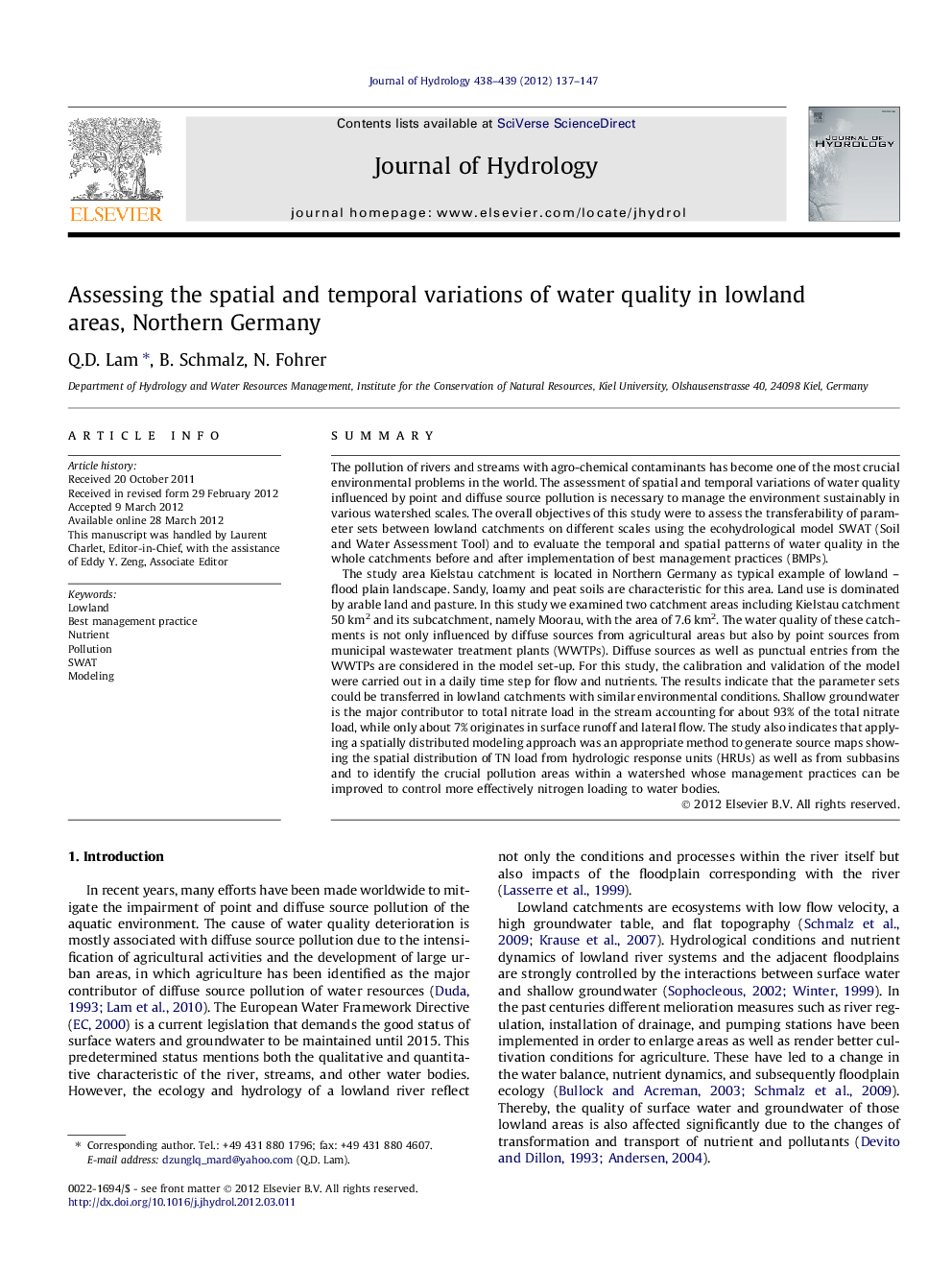| کد مقاله | کد نشریه | سال انتشار | مقاله انگلیسی | نسخه تمام متن |
|---|---|---|---|---|
| 6414025 | 1629992 | 2012 | 11 صفحه PDF | دانلود رایگان |

SummaryThe pollution of rivers and streams with agro-chemical contaminants has become one of the most crucial environmental problems in the world. The assessment of spatial and temporal variations of water quality influenced by point and diffuse source pollution is necessary to manage the environment sustainably in various watershed scales. The overall objectives of this study were to assess the transferability of parameter sets between lowland catchments on different scales using the ecohydrological model SWAT (Soil and Water Assessment Tool) and to evaluate the temporal and spatial patterns of water quality in the whole catchments before and after implementation of best management practices (BMPs).The study area Kielstau catchment is located in Northern Germany as typical example of lowland - flood plain landscape. Sandy, loamy and peat soils are characteristic for this area. Land use is dominated by arable land and pasture. In this study we examined two catchment areas including Kielstau catchment 50Â km2 and its subcatchment, namely Moorau, with the area of 7.6Â km2. The water quality of these catchments is not only influenced by diffuse sources from agricultural areas but also by point sources from municipal wastewater treatment plants (WWTPs). Diffuse sources as well as punctual entries from the WWTPs are considered in the model set-up. For this study, the calibration and validation of the model were carried out in a daily time step for flow and nutrients. The results indicate that the parameter sets could be transferred in lowland catchments with similar environmental conditions. Shallow groundwater is the major contributor to total nitrate load in the stream accounting for about 93% of the total nitrate load, while only about 7% originates in surface runoff and lateral flow. The study also indicates that applying a spatially distributed modeling approach was an appropriate method to generate source maps showing the spatial distribution of TN load from hydrologic response units (HRUs) as well as from subbasins and to identify the crucial pollution areas within a watershed whose management practices can be improved to control more effectively nitrogen loading to water bodies.
⺠We modeled hydrological and nutrient processes in two lowland catchments. ⺠Parameter set could be transferred in similar lowland catchments. ⺠Shallow groundwater flow is the major source of nitrate in the stream. ⺠Implementation of BMPs would result in a significant reduction of nitrogen load.
Journal: Journal of Hydrology - Volumes 438â439, 17 May 2012, Pages 137-147